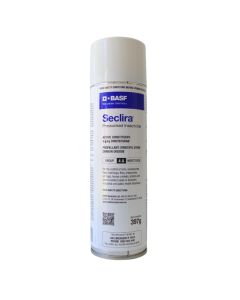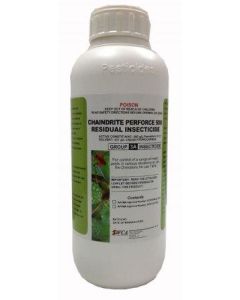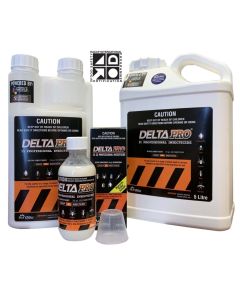White Footed House Ants
- Article
- White Footed House Ants
White Footed House Ants
Scientific Name: Technomyrmex albipes
How to identify White footed house ants
White Footed House Ants (Technomyrmex albipes) is a medium small (2.5-3 mm long), black to brownish-black ant with yellowish-white tarsi (feet) and a one-segmented waist, they have five abdominal segments, 12-segmented antennae, few erect hairs, and no sting.
The white-footed ant looks similar to the Argentine ant, Linepithema humile, however, the petiole of the Argentine ant has a vertical projection that is lacking on the white-footed ant.

Where are White footed house ants commonly found?
The white-footed ant nests at or above ground level in numerous locations within the landscape and home. Nests are frequently found in trees and bushes, tree holes, under palm fronds and old leaf boots, under leaves on trees, in loose mulch, under debris, in leaf-litter (both on the ground as well as in rain gutters), wall voids, and attics. Nests tend to be found outside of structures more than inside. Preferred nest sites provide proximity to moisture and food sources, and protection from predators and environmental extremes. Numerous nests can be said to constitute a colony, but since all neighbouring colonies seems to be interconnected, there is probably no way to delineate the limits of a single colony.
Why are White footed house ants considered a pest?
Most ant species are not considered to be pests with only a few native and introduced species causing some concern.
Some nest in decaying timber and may be suspected of actually destroying it whereas they will only infest decaying timber. Most foraging workers come from the exterior of premises but it is not particularly uncommon to find nests in roof voids, cavity walls, behind skirting boards, inside motors, inside window screens, under bath tubs, behind tiles in bathrooms and kitchens and behind taps.
In short, they like similar locations to cockroaches and as a result, control methods are very similar. Because of their nesting habits, it is common to find piles of gritty material on the floor or other horizontal surfaces or around door and window frames. On closer inspection, these piles may be found to contain dead ants which have been thrown out of the nest. No matter how often you sweep up the mess, it will re-appear as long as the ants are active.
This habit of making a little mess is not a mammoth problem but ants do become a nuisance when they are spotted walking inside pantries and getting into food containers, trailing along bench tops, window sills, skirting boards, bath tubs and invading shower recesses.

What is the biology and lifecycle of White footed house ants?
Although white-footed ants are strongly attracted to sweet foods they will also feed on dead insects and other protein. They are commonly found foraging along branches and trunks of trees and shrubs that have nectars and/or sap-sucking insects that produce honeydew. They tend to send many foragers from their nests to search for new food resources. Nestmates are recruited to resources by foragers who lay trail pheromones. Often the same trails are observed between a nest and resource for months at a time. In and on structures, foragers tend to follow lines, such as an edge of an exterior wall panel, which eventually leads to some small opening to the interior, where foragers that enter become more noticeable to occupants. Frequently, the white-footed ant finds its way inside wall voids where they follow electrical cables and emerge into various rooms, especially kitchens and bathrooms, where liquid and solid foods can be encountered resulting in heavy trailing activity.

Management Tips for White Footed House Ant
Effective control depends upon a number of factors:
-
The particular species involved,
-
The location of the nest site(s) and,
-
The degree of concern they are causing the occupants.
It may be easy to control a colony with a single queen (Camponotus spp), or difficult in the case of species with multiple queens and multiple “homes” and which do not display aggression to workers from other nests (Argentine ants, Odorous house ants and Pharaoh’s ants). That is why correct identification is essential before you begin your campaign.
Ant granules were perfect for the control of some ant species to exterior areas. Most insecticide manufacturers suggest that a two-pronged approach with both baits and liquid sprays be used in order to obtain best results. These manufacturers all supply bulletins with complete instructions on how to use their products. The product labels and these bulletins should all be studied before using any of the materials.
The basic rules for the use of baits are:
-
The basic premise is that bait should hopefully be consumed within 1 to 2 days when their palatability and moisture content are highest. The ants should die within 3 to 4 days.
-
Correct identification – by knowing the species, you can choose the right bait for the job and can also help you find their feeding, trailing and nesting sites.
-
Find the trails – you must place the bait where the ants are otherwise you are wasting time and bait. If the ants aren’t active at the time, you can pre-bait first with non-toxic foodstuffs. This will help you determine where the ants are feeding and what type of food they prefer.
-
Choose the correct bait formulation, they may prefer sweet foods or protein based materials. Sometimes the same species will change food preferences depending upon seasons or other conditions. Therefore, you need to have a range of baits in your kit bag. If you just put a small blob of each bait in the ant trails, you will very soon find which they prefer.
Some key rules to observe are:
-
Place the bait as close as possible to ant trails which are usually near feeding or nesting sites.
-
Place adequate amounts of bait out to ensure that they will continue to feed until your next visit. By placing the bait in purpose designed “ant cafes,” you will extend the life of the bait.
-
Avoid food competition by asking the client to remove available foodstuffs and liquids.
-
Avoid placing gel baits near sources of heat as the gel matrix may become liquefied and moisture loss may increase. Also, avoid placing them on dry or porous surfaces which may increase water loss and make them less palatable to ants.
-
Some baits lose their potency after only a few days exposure to sunlight. Make sure that you know which they are and replace them as required.
-
Some granulated baits lose their potency around three months after the container has been opened. Make sure that you write on the container the date on which it was opened.
-
A common piece of advice is that you mustn’t place baits on surfaces that have or will be treated with liquid or powder insecticides. Studies carried out by some researchers have indicated that this is not the case and the baits are still palatable. Some pest managers have stated, “Why waste money by applying two formulations?” and that is probably a good rule to live by. You may be able to control the ant problem without the use of insecticidal sprays and dusts but, all manufacturers recommend that bait applications are supplemented by the use of such formulations when treating free standing buildings. These insecticidal barriers will serve to prevent future ant activity to the interior.
The basic rules for the use of residual insecticide sprays are:
-
Non-repellent formulations are considered superior to repellent formulations e.g. synthetic pyrethroids, as the ants will track through the non-repellent insecticide unknowingly. Examples of non-repellent actives and formulations are Bendiocarb (Ficam), Fipronil (Termidor), Indoxacarb (Arilon), Chlorfenapyr (Phantom).
-
The sprays should be applied as a barrier to the base of foundation walls, fence lines and garden beds.
-
Re-application of the sprays may be necessary after rain.
-
Insecticidal dusts should be applied to roof voids where practical.
PRODUCT SOLUTIONS
-
 Seclira Pressurised Insecticide 397g5g/kg Dinotefuran
Seclira Pressurised Insecticide 397g5g/kg DinotefuranSeclira Pressurised Insecticide is a fast-acting, non-repellent, ready-to-use product with System III compatibility for the control of a broad range of pests including ants, and cockroaches.
-
 Maxforce Quantum Liquid Ant Bait (3 x 30g Pack)0.3g/L Imidacloprid
Maxforce Quantum Liquid Ant Bait (3 x 30g Pack)0.3g/L ImidaclopridMaxforce Quantum Liquid Ant Bait is a viscous liquid ant bait containing active ingredient 0.3g/L Imidacloprid. Ants take the bait back to the nest where the active ingredients kills the queen, workers and the rest of the nest.
-
 Coopex Dust Insecticidal Dusting Powder10g/kg Permethrin
Coopex Dust Insecticidal Dusting Powder10g/kg PermethrinCoopex Dust Insecticidal Dusting Powder is registered for the control of cockroaches, ants, fleas, silverfish and bed bugs in and around domestic and industrial premises, food preparation and storage areas. Also for control of mushroom flies in mushroom housing and bees in wall cavities.
-
 Biflex Aqua Max Insecticide and Termiticide100g/L Bifenthrin
Biflex Aqua Max Insecticide and Termiticide100g/L BifenthrinBiflex AquaMax is the first ever Professional Strength, multi-insecticide and termiticide. Effective on a wide range of common household pests and all termite species in Australia.
-
 Anthem Insecticide Granules0.5g/kg Fipronil
Anthem Insecticide Granules0.5g/kg FipronilAnthem Insecticide Granule contains 0.5g/kg of Fipronil and is used for the control of Argentine stem weevil, mole crickets and ants in commercial and recreational turf and control of ants in external surrounds of buildings and structures
-
 Chaindrite Perforce 500 Residual Insecticide500 g/L Permethrin
Chaindrite Perforce 500 Residual Insecticide500 g/L PermethrinChaindrite Perforce 500 Residual Insecticide is formulated for the control of a broad range of insects in various situations as per the Directions for Use table.
-
 Fipforce Dust Termiticide and Insecticide5g/kg Fipronil
Fipforce Dust Termiticide and Insecticide5g/kg FipronilFipforce Dust Termiticide and Insecticide contains 5g/kg of Fipronil which is toxic to insects by contact or ingestion. FipForce Dust is applied through a hand duster to help in the control of Termites, Nuisance ants and Cockroaches. It has a mineral based carrier which flows extremely well and is less susceptible to moisture than cellulose based dusts. Less moisture build-up means less clogging of the application procedure.
Out of stock -
 Shieldrite Crawling Insect Foam 350g0.5g/kg Imidacloprid
Shieldrite Crawling Insect Foam 350g0.5g/kg ImidaclopridShieldrite Crawling Insect Foam is a non repellent suspension concentrate formulated into a ready to use foam for the use in the management of pest insects including Termites, European wasps, Ants, Cockroaches and Bed bugs.
-
 Ensnare Pro 50SC Insecticide 1L50g/L Indoxacarb
Ensnare Pro 50SC Insecticide 1L50g/L IndoxacarbEnsnarePRO is a non-repellent residual suspension concentrate spray. It can be used in conjunction with baits without reducing the performance of the bait. Ants, cockroaches and flies don’t know it’s there. The ‘non-repellent’ properties of this formulation does not interfer with insects natural behaviour...
-
 Antagonist Pro Insecticide80g/L Bifenthrin
Antagonist Pro Insecticide80g/L BifenthrinANTagonist PRO insecticide is a suspension concentrate formulation containing a Polymer Enhanced Synthetic Pyrethroid approved for the treatment of ants, spiders, wasps, cockroaches, mosquitoes, midges, fleas, flies, ticks, termites and turf pests including lawn armyworms, sod webworms, argentine stem weevil, billbug, African black beetle, ants and ornamental pest including mites, aphids, caterpillars, loopers, earworm, budworm, light brown apple moth, whitefly, mealybug, thrips and cutworms.
-
 Demand 100CS Insecticide100g/L Lambda-Cyhalothrin
Demand 100CS Insecticide100g/L Lambda-CyhalothrinDemand 100CS is a cost effective and long lasting insecticide for the controls of ants, cockroaches, fleas, flies, mosquitoes, silverfish, ticks and spiders for up to up to 12 months indoors and up to 3 months outdoors. It can be applied to foliage for up to 14 weeks of mosquito control.
-
 Optigard Ant Bait Gel0.1g/kg Thiamethoxam
Optigard Ant Bait Gel0.1g/kg ThiamethoxamOptigard Ant Bait Gel is an ant gel solution for professional pest controllers looking to deliver long-lasting, effective ant control. Designed for sugar-feeding ants, it not only targets visible infestations but eradicates entire colonies, including hard-to-reach queens. With its powerful formula and versatility, Optigard ensures your clients receive superior results in homes, businesses, schools, hospitals, and food preparation facilities.
-
 Arilon Insecticide200g/kg Indoxacarb
Arilon Insecticide200g/kg IndoxacarbArilon is a non-repellent insecticide which provides excellent control of ants, cockroaches and other key insect pest species on a variety of interior and exterior surfaces. With its powerful active ingredient and wide-ranging application, Arilon delivers exceptional results against ants, cockroaches, houseflies, and termites—indoors, outdoors, and on various surfaces. Its flexibility and superior efficacy make it indispensable for commercial and domestic pest control programs.
-
 Delta Pro 25SC Professional Insecticide25g/L Deltamethrin
Delta Pro 25SC Professional Insecticide25g/L DeltamethrinFor the control of a range of insect pests such as spiders, cockroaches, flies, ants, mosquitoes in various situations.
-
 Seclira WSG Insecticide400g/kg Dinotefuran
Seclira WSG Insecticide400g/kg DinotefuranSeclira® WSG insecticide is a non-staining, odourless, broad spectrum, general insect control product for indoor and outdoor use.
-
 Termidor SC Residual Termiticide100g/L Fipronil
Termidor SC Residual Termiticide100g/L FipronilTermidor SC Residual Termiticide and Insecticide provides superior levels of control across subterranean termites, ants, cockroaches, spiders, and flies.
-
 Suspend Flexx Insecticide25g/L Deltamethrin
Suspend Flexx Insecticide25g/L DeltamethrinSuspend Flexx Insecticide is a synthetic pyrethroid (3A) formulation for the knockdown and residual control of a range of insect pests in various indoor and outdoor situations.
-
 Starrdust PRO One-Shot Insecticidal Dust 400g20g/kg Permethrin, 5g/kg Triflumuron
Starrdust PRO One-Shot Insecticidal Dust 400g20g/kg Permethrin, 5g/kg TriflumuronThe Starrdust PRO One-Shot Insecticidal Dust 400g is an industrial-strength dust designed for use with the Starrdust PRO Duckbill Duster. It is a ready-to-use broad-spectrum insecticide with a unique formulation. It controls a wide range of insect pests including cockroaches, silverfish, spiders, ants, fleas, carpet beetles, bed bugs, European wasps, feral honey bees, bird mites, subterranean termites, hide beetles, millipedes, woodlice and clothes moths.
-
 Starrdust PRO One-Shot Insecticidal Dust 19 x 400g + Duckbill20g/kg Permethrin, 5g/kg Triflumuron
Starrdust PRO One-Shot Insecticidal Dust 19 x 400g + Duckbill20g/kg Permethrin, 5g/kg TriflumuronA convenient kit of 19 x Starrdust PRO One-Shot Insecticidal Dust 400g Pods and a bonus Duckbill Duster. StarrDust PRO is an industrial-strength dust designed for use with the Starrdust PRO Duckbill Duster. It is a ready-to-use broad-spectrum insecticide with a unique formulation. It controls a wide range of insect pests including cockroaches, silverfish, spiders, ants, fleas, carpet beetles, bed bugs, European wasps, feral honey bees, bird mites, subterranean termites, hide beetles, millipedes, woodlice and clothes moths.
-
 Taser Pro 800 WP Insecticide800g/L Bendiocarb
Taser Pro 800 WP Insecticide800g/L BendiocarbTaser Pro Insecticide is a residual broad spectrum non-repellent spray for the control of a wide range of insect pests in domestic, farm, agricultural, industrial, commercial and public service buildings.
-
 Fipforce Dust Termiticide and Insecticide (Pack of 2 x 5g)5g/kg Fipronil
Fipforce Dust Termiticide and Insecticide (Pack of 2 x 5g)5g/kg FipronilFipforce Dust Termiticide and Insecticide contains 5g/kg of Fipronil which is toxic to insects by contact or ingestion. FipForce Dust is applied through a hand duster to help in the control of Termites, Nuisance ants and Cockroaches. It has a mineral based carrier which flows extremely well and is less susceptible to moisture than cellulose based dusts. Less moisture build-up means less clogging of the application procedure.
-
 Tempo Residual Insecticide 1L25 g/L betacyfluthrin
Tempo Residual Insecticide 1L25 g/L betacyfluthrinTempo Residual Insecticide is a fast-acting, knock-down, broad-spectrum insecticide for general insect control in domestic and commercial situations, as well as for the control of pest insects of turf and ornamental plants.
-
 Killmaster Zero Pest Insecticide Strip 65g
Killmaster Zero Pest Insecticide Strip 65gKillmaster Zero Pest Strip is a highly effective, long-lasting solution for managing a wide range of flying and crawling insect pests, including cockroaches, moths, silverfish, ants, and flies. Designed for non-living areas such as storage spaces, store rooms, and industrial bins, this pest strip provides hassle-free protection for up to 4 months.
Out of stock
JOIN OUR NEWSLETTER NOW!
Be the first to hear about the latest specials, products, tips and ideas.

